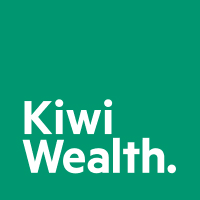How to stop procrastinating and actually (finally) get on top of KiwiSaver. Because there’s a good chance that if you’re reading this, you don’t know a single thing about it.
Read the full series here.
In a lot of ways, KiwiSaver is a bit of a misnomer. Sure you’re saving for your future retirement, but it isn’t a savings account – it’s an investment. And I don’t mean investment like “your education is an investment” or “that $500 pair of sneakers you can’t really afford is an investment”. It’s an investment in the sense that our money is being put into assets that earn income or grow in value, like shares, bonds or commercial property.
“The difference between a savings and investment account is that a savings account is where you take your money, put it into a bank, and the bank gives you some interest for doing that,” Sorted’s managing editor Tom Hartmann explains. “It’s usually not a lot [of interest], but as long as you keep putting money into it and you don’t take anything out, your savings account is always going to increase.
“With an investment account, it’s completely different. When you put money into it, it’s actually going to buy things called investments that will bring money back to you, which is why it’s called a return… and if that money’s left in there, those returns have the potential to earn more returns like a wealth snowball.”
So who decides how that money gets invested? That depends on your provider which is the entity that actually holds your KiwiSaver account. These are usually banks or investment companies (not the government) who offer you a number of different ways of investing your money. Broadly speaking, most providers will offer to invest your KiwiSaver in a defensive, conservative, balanced, growth or aggressive fund. Each one invests in different things that have varying levels of volatility, so the right fund for you will mostly depend on your appetite for risk.
“With KiwiSaver, those things you’re buying into – shares, bonds, property, cash – will go up and down in value like an escalator, [determining] how fast you grow and how much of a rollercoaster it’s going to be,” says Hartmann. “Shares and commercial property (growth assets) are more volatile which means there are going to be more ups and downs. Cash and bonds (income assets) won’t go up and down as much, but they also have less potential for growth.”
The easiest way to figure out the type of fund you want is to use an online tool like the KiwiSaver Fund Finder which asks: a) when you expect to start spending your KiwiSaver money, b) what’s most important to you while you’re saving, and c) the range of gains vs. losses you’d be comfortable with over a single year. For example, my answers show that I should be looking at growth funds which are designed for those looking for “fairly high growth over the long term” and are “intending to leave [their] money in KiwiSaver for at least 10 years”.
After you know what type of fund you should be looking for, you then need to select the fund from among the dozens on offer by various providers. It’s important you spend a bit of time comparing what’s out there because not all funds are made equal. Within the same type of fund, different providers will offer varying fees, services and returns, regardless of what your existing provider might insist.
“A lot of the providers will say, ‘oh all balanced funds or all conservative funds are the same, just pick mine’. But they’re not. Not all of them get the same results and not all of them have the same costs or services,” says Hartmann, who goes onto explain that another way to think about your KiwiSaver is to think of it like your smartphone. Just as there are different smartphone makers (eg: Apple, Samsung, Huawei) there are different KiwiSaver providers, and just as there are different smartphones (eg: iPhone 11, Samsung Galaxy Note 10, Huawei P30 etc.) there are also different KiwiSaver funds.
With KiwiSaver Fund Finder you can use the compare funds tool to find the fund that has the lowest fees, the most services and the highest historic returns. Take growth funds, for example, of which there are more than 60 on offer. If I wanted the lowest fees possible, the tool shows that I should opt for Simplicity’s Growth Fund (0.48%), for the most services I should opt for one of several on offer by NZ Funds, and if I wanted the highest returns (based on historic data since future returns aren’t guaranteed) I should opt for QuayStreet’s Equity Fund (14.25%) instead.
But fees, returns and services aren’t the only things we should consider when choosing a fund. We should also be looking to invest our KiwiSaver ethically, which will all be explained in part three.


